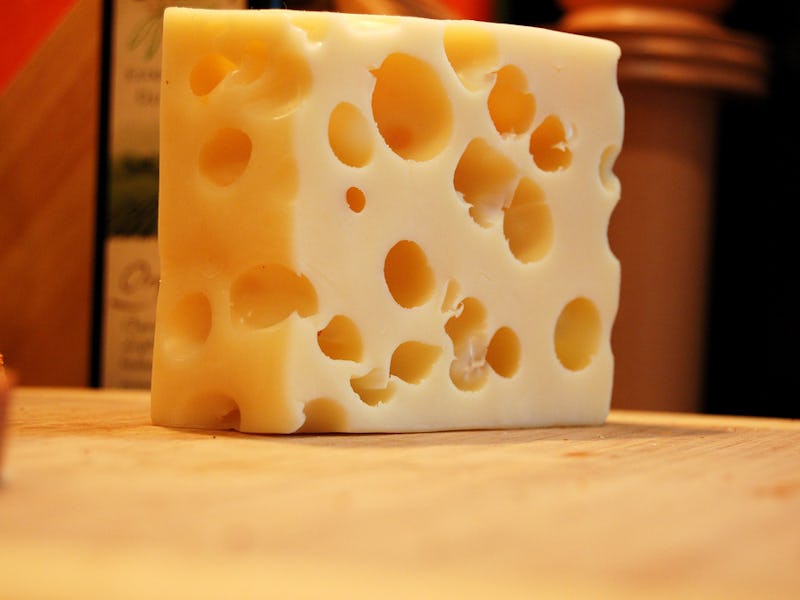Finally, a Solution to the Great Swiss Cheese Riddle
The hole truth and nothing but.

Scientists at agricultural institute Agroscope (in Switzerland, naturally) say they have an answer as to how Swiss cheese got its holes. Little particles of hay dust create gaps in the cheese as it matures. As more cheese makers eschew the old fashioned pump-n-pail for more advanced milking machines, a spokesperson for Agroscope told The Guardian, less hay gets in the mix, leading to fewer holes. Adding more hay back in lead to more holes.
This finding stands to overturn some of the other Swiss cheese hypotheses, like the roughly 100-year-old idea that bacteria expelling carbon dioxide bubbles make the holes. Packers fans can take solace in the fact their cheese hats don't represent the product of bacteria passing gas, just dirty milk.
This article was originally published on